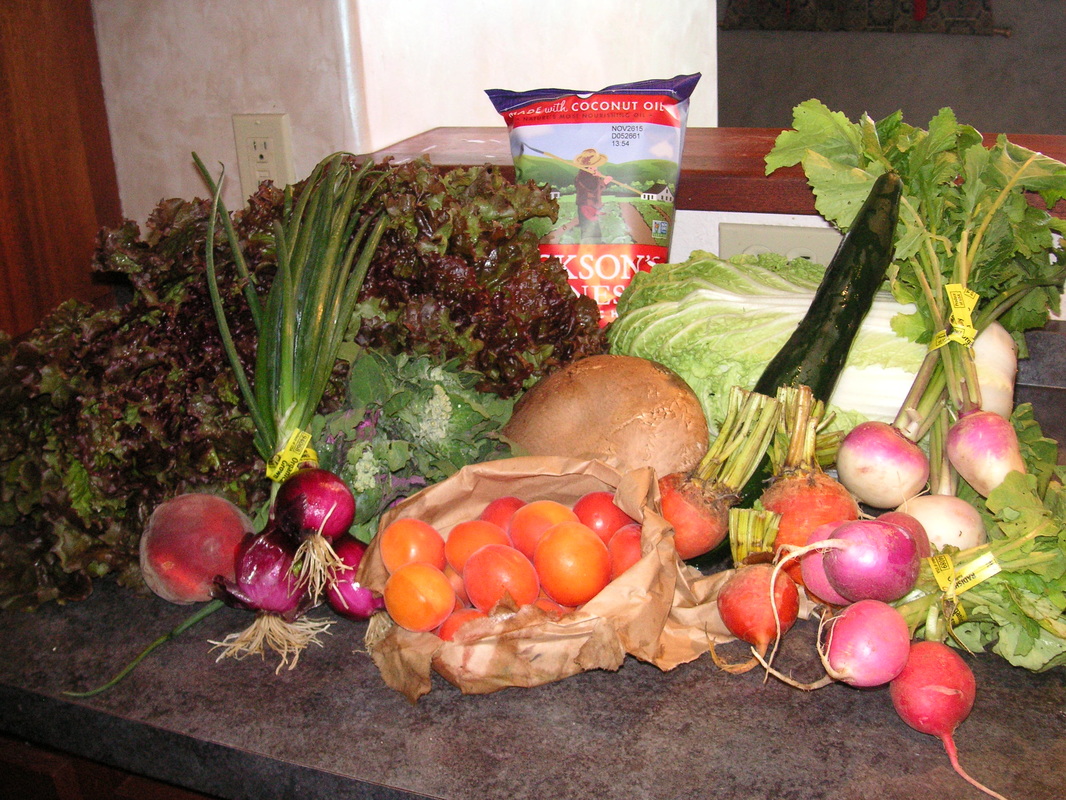|
“The passive American consumer, sitting down to a meal of pre-prepared food, confronts inert, anonymous substances that have been processed, dyed, breaded, sauced, gravied, ground, pulped, strained, blended, prettified, and sanitized beyond resemblance to any part of any creature that ever lived. The products of nature and agriculture have been made, to all appearances, the products of industry. Both eater and eaten are thus in exile from biological reality.” ― Wendell Berry Photo of last week's harvest from Megumi Sugihara.
This week:
Pliny the Elder claimed radicchio was useful as a blood purifier and an aid for insomniacs in Naturalis Historia. In fact, radicchio contains intybin, a sedative/analgesic, as well as a type of flavonoid called anthocyanin which is used for making dye-sensitized solar cells. Modern cultivation of the plant began in the fifteenth century, in the Veneto and Trentino regions of Italy, but the deep-red radicchio of today was engineered in 1860 by the Belgian agronomist Francesco Van den Borre, who used a technique called imbianchimento (whitening), preforcing, or blanching to create the dark red, white-veined leaves: radicchio plants are taken from the ground and placed in water in darkened sheds, where lack of light and ensuing inhibition of chlorophyll production cause the plants to lose their green pigmentation. More to come on this week's Fresh Box, but more deliveries now to make!!
0 Comments
Leave a Reply. |
Archives
June 2024
Categories |


 RSS Feed
RSS Feed

